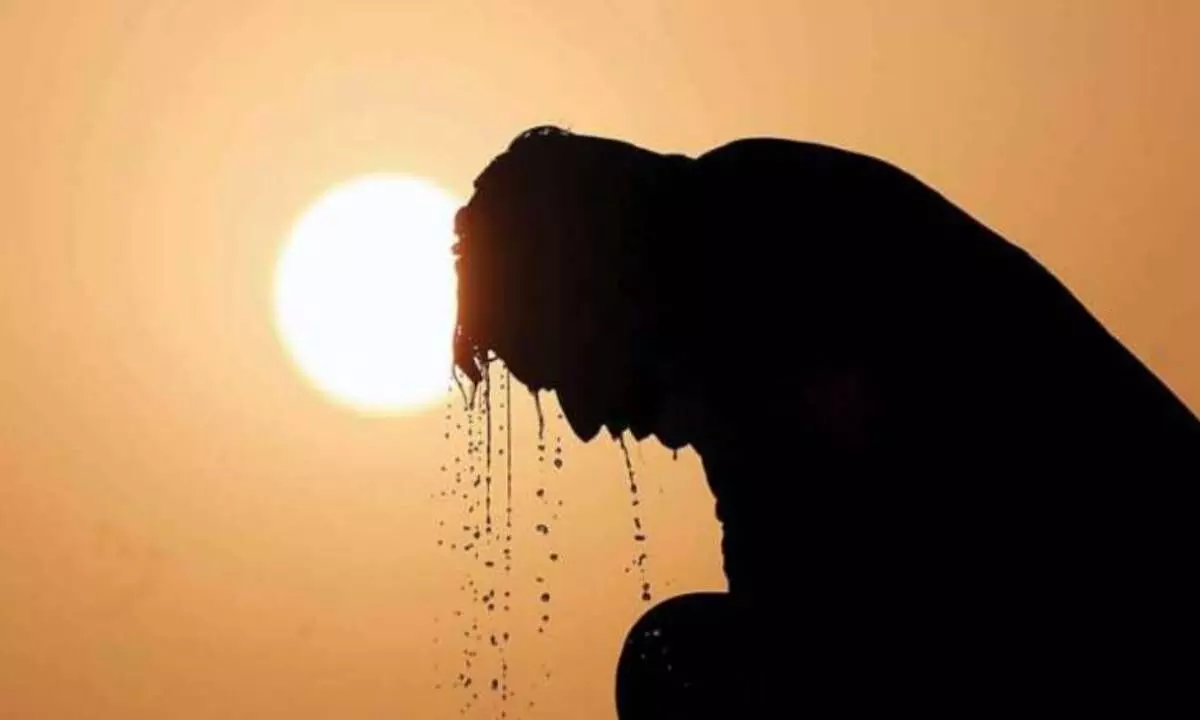Mercury hits more than 50°C in Churu, Rajasthan and Sirsa, Haryana
Mercury Crosses 50°C: Scorching Heat Grips Parts of North and Central India
image for illustrative purpose

Mercury Crosses 50°C: Scorching Heat Grips Parts of North and Central India
IMD Issues 'Red' Alert for Rajasthan, Delhi, Punjab, Haryana, Chandigarh, and Madhya Pradesh
The India Meteorological Department (IMD) has issued a "red" alert for Rajasthan, Delhi, Punjab, Haryana, Chandigarh, and Madhya Pradesh as scorching heat engulfs North India. The IMD predicts a maximum temperature of 46 degrees Celsius in Delhi, while Uttar Pradesh faces an "orange" alert for severe heatwave conditions.
Record-Breaking Temperatures
Delhi experienced its hottest day of the season, with temperatures reaching 50 degrees Celsius in some areas on Tuesday. The official weather station at Safdarjung recorded 45.8 degrees Celsius, but the outskirts reported higher temperatures:
Mungeshpur: 49.9°C
Narela: 49.9°C
Najafgarh: 49.8°C
Pitampura: 48.5°C
Pusa: 48.5°C
IMD's Heatwave Alert
The IMD's bulletin on Wednesday highlighted the severity of the heatwave, forecasting:
Heatwave to severe heatwave conditions in many parts of Rajasthan, Punjab, Haryana, Chandigarh, Delhi.
Isolated parts of West Uttar Pradesh and West Madhya Pradesh will also be affected from May 27th-29th.
Gradual reduction in heatwave conditions over central and northwest India is expected from May 30th.
Warm night conditions will persist in Delhi and neighboring regions until June 2nd.
Hottest Cities on May 28
Churu, Rajasthan: 50.5°C
Sirsa, Haryana: 50.3°C
Mungeshpur, Delhi: 49.9°C
Jhansi, Uttar Pradesh: 49.0°C
Prithvipur, Madhya Pradesh: 48.5°C
Daltonganj, Jharkhand: 47.5°C
Bhatinda, Punjab: 47.2°C
Dehri, Bihar: 47.0°C
Mungeli, Chhattisgarh: 47.0°C
Boudh, Odisha: 45.9°C
Reasons Behind the Heatwave
IMD Director-General Mrutyunjay Mohapatra attributes the heatwave to:
Absence of western disturbances in late May. These extra-tropical systems, formed over the Mediterranean Sea, typically move west to east.
The El Niño effect, which alters global weather patterns, shifting warm water to the Eastern Pacific and causing hotter global temperatures.
A high-pressure system blocking moist sea breezes from the Bay of Bengal and Arabian Sea, contributing to record-high April temperatures across India.
Hidden Dangers of Rising Nighttime Temperatures
Urban Heat Islands (UHIs), characterized by concrete and asphalt surfaces and reduced vegetation, cause cities to retain heat and release it slowly overnight. This leads to higher nighttime temperatures, exacerbating health impacts by preventing the body from cooling down after a hot day. Dr. Chaitanya H R from Athreya Hospital, Bengaluru, emphasizes the increased health risks, including:
Inability to recover from daytime heat stress
Increased core body temperature
Persistent sweating
Strain on the heart
Preventive Measures
Hydration: Drink water regularly, even without feeling thirsty. Avoid alcohol and caffeine.
Clothing: Take showers and wear lightweight, loose-fitting clothes.
Outdoor Activities: Limit time outside during the hottest parts of the day. Take frequent breaks and stay hydrated if you must be outdoors.
Diet: Eat light, easily digestible meals. Avoid heavy meals that increase metabolic heat.
Vigilance: Monitor children, elderly family members, and those with chronic health conditions.
The severe heatwave highlights the importance of preparedness and precautions to safeguard health during extreme temperatures.


